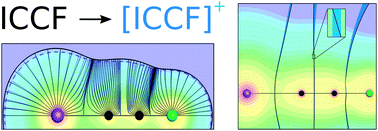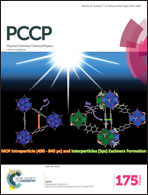The influence of zero-flux surface motion on chemical reactivity
Abstract
Visualizing and predicting the response of the electron density, ρ(r), to an external perturbation provides a portion of the insight necessary to understand chemical reactivity. One strategy used to portray electron response is the electron pushing formalism commonly utilized in organic chemistry, where electrons are pictured as flowing between atoms and bonds. Electron pushing is a powerful tool, but does not give a complete picture of electron response. We propose using the motion of zero-flux surfaces (ZFSs) in the gradient of the charge density, ∇ρ(r), as an adjunct to electron pushing. Here we derive an equation rooted in conceptual density functional theory showing that the movement of ZFSs contributes to energetic changes in a molecule undergoing a chemical reaction. Using a substituted acetylene, 1-iodo-2-fluoroethyne, as an example, we show the importance of both the boundary motion and the change in electron counts within the atomic basins of the quantum theory of atoms in molecules for chemical reactivity. This method can be extended to study the ZFS motion between smaller gradient bundles in ρ(r) in addition to larger atomic basins. Finally, we show that the behavior of ∇ρ(r) within atomic basins contains information about electron response and can be used to predict chemical reactivity.


 Please wait while we load your content...
Please wait while we load your content...